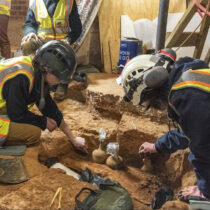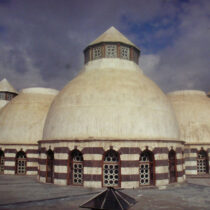The remains of ancient Maroneia lie south east of Komotini, on a plain well protected from the north winds by Ismaros Mountain. The area has been inhabited since the Neolithic age 93rd millennium BC). At least seven settlements belong to this period and more precisely to the 2nd millennium BC. The archaeological data speaks for the domination of this area by Thracian tribes – they also managed to reach Troy – during these years. Homer provides the first information about Maroneia and also mentions the town as birthplace of the priest Maron, who lived in the sacred grove of Apollo in the town Ismaros. In the 7th century BC a wide colonization of the coastal Thrace took place. The location of the first settlement of emigrants from Chios Island remains as yet unknown. However, in Professor Bakalaki’s opinion, this colony must be identified with the acropolis at the top of Ismaros Mountain, east of Maroneia. Besides the elegant coins of the 6th century BC, we have no other information or documentation of the life of Maroneia in antiquity. During the Persian Wars, Maroneia shared the fate of the other Thracian towns and was occupied by the invaders. After the defeat of the Persians, the town became a member of the Athenian Alliance. The 4th century BC, was the period of flourishing and prosperity for Maroneia. The archaeological excavations that started in 1969 in Maroneia and continue until today, brought to light important finds, significant for the town’s history. Of equal importance are also the remnants of the Byzantine Era in the area than prove beyond doubt that Thrace has always been a most valuable source of culture.
Maroneia
31 Jul 2012
by Archaeology Newsroom
- A
- A
- A

